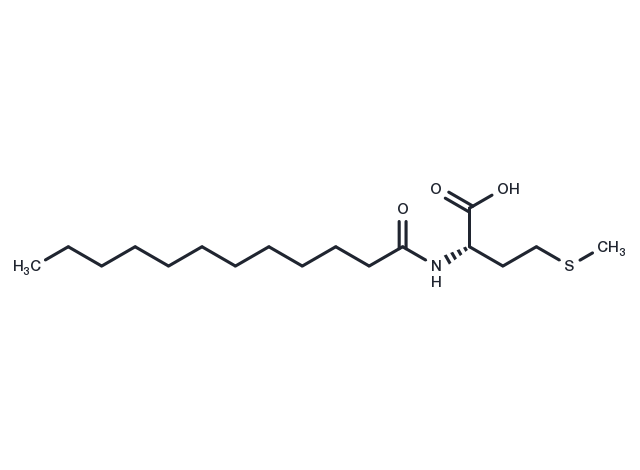Powder: -20°C for 3 years | In solvent: -80°C for 1 year


Lauroylmethionine is a lysine salt of the product formed by the condensation of lauroyl fatty acid chloride with methionine.

| Pack Size | Availability | Price/USD | Quantity |
|---|---|---|---|
| 25 mg | 6-8 weeks | $ 1,520.00 | |
| 50 mg | 6-8 weeks | $ 1,980.00 | |
| 100 mg | 6-8 weeks | $ 2,500.00 |
| Description | Lauroylmethionine is a lysine salt of the product formed by the condensation of lauroyl fatty acid chloride with methionine. |
| Synonyms | N-Lauroyl-L-methionine, Lauroyl-L-methionine |
| Molecular Weight | 331.51 |
| Formula | C17H33NO3S |
| CAS No. | 35440-74-5 |
Powder: -20°C for 3 years | In solvent: -80°C for 1 year
You can also refer to dose conversion for different animals. More
bottom
Please see Inhibitor Handling Instructions for more frequently ask questions. Topics include: how to prepare stock solutions, how to store products, and cautions on cell-based assays & animal experiments, etc.
Lauroylmethionine 35440-74-5 N-Lauroyl-L-methionine Lauroyl-L-methionine inhibitor inhibit
